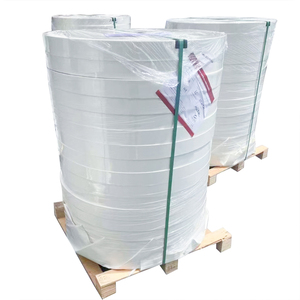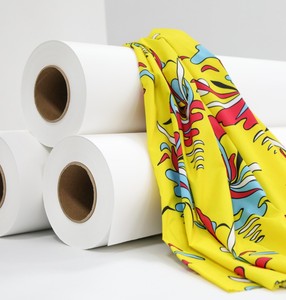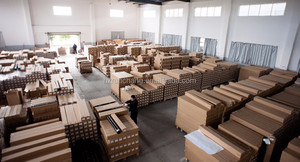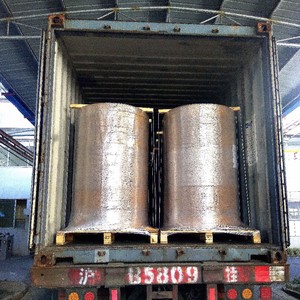
All categories
Featured selections
Trade Assurance
Buyer Central
Help Center
Get the app
Become a supplier

(30 products available)




















The paper industry utilizes different types of granite press rolls to meet specific production requirements. Here are some common types of granite press rolls:
Material composition
The press rolls are made of granite, which is a strong and heavy natural stone. The granite gives the rolls a high level of durability. This means they can last a very long time without cracking or breaking. Their robust construction enables them to bear substantial weights and pressures over extended periods. Such tenacity permits these rolls to perform reliably and consistently for many years with minimal need for repairs.
Granite hardness
The hardness of the granite press roll refers to how tough and resistant to scratching or denting the granite material is. The granite used for press rolls has a very high hardness level. This extreme hardness makes the surface of the press rolls very tough and resistant to wears in a paper-making machine. Even after continuous use, the hard surface endures and maintains its shape without developing significant damages.
Diameter and length
The diameter and length of a granite press roll describe its size and how big it is. Press rolls can be quite large, with some having a diameter of around 2,000 millimeters or more. The length of the rolls can also be considerable, often reaching up to 4,000 millimeters. The large dimensions provide the press rolls with a very high pressing power. Their gigantic size and weight can exert immense pressure on wet paper. This heavy force squashes it effectively between the granite roll and the press felt, thereby removing excess water from the paper.
Surface Finish
The surface finish of the granite press roll refers to how the outside layer is done and the texture created. This includes whether the surface is smooth, rough, or has some other kind of pattern or coating. The texture of the surface has an important role to play in how water extraction from the paper is affected. Different surface finishes can be experimented with to find out which ones perform best in the paper-making process.
Clean regularly
It is important to make cleaning of the granite press rolls a part of the maintenance routine of any paper mill. Cleaning helps to remove any residual chemicals or paper fibers that may be left on the roll after the dewatering and pressing processes. A careful washing method that uses purified water should always be employed. Making use of purified water is good for the rolls as it helps to prevent any deposition of mineral content on their surfaces.
Inspect for damages
Regular inspection for any damage is very essential to maintaining granite press rolls. Users should check the rolls often to see if there are any cracks, chips, or other visible problems. Fast action should be taken to repair or mitigate any damages discovered during the inspection process. This helps to prevent the further escalation of damage and ensures the longevity and performance of the press rolls.
Check alignment and balancing
Periodic checks should be performed to ascertain the proper alignment and balanced state of the granite press rolls. Any adjustments necessary to make sure the rolls are ideally balanced and well-aligned should be done promptly. Consistent maintenance of alignment and balance improves the stability of the presses during operation. This balance enhances the functional efficiency of the machines. It also aids in protecting the rolls from excessive and uneven wear. Adequate alignment and proper balance help to extend the lifespan of the press components.
Granite rolls for paper mills perform different functions in various settings. Here are some of the usage scenarios of granite press rolls for paper production.
When choosing granite rolls for paper mills, several factors need to be considered in order to ensure the final product is not only cost-effective but also capable of satisfying specific papermaking needs.
Papermaking Machine Specifications
The supplier has to ensure that the roll's dimensions and design fit into the existing paper-making machines. Also, the compatibility of materials is to be accounted for, meaning that the press roll will function properly and efficiently if it coincides with the other components of the paper mill.
Pressing Requirements
Different types of paper require varying degrees of pressing. For example, high-pressure granite rolls might be necessary for publication paper due to its thin sheets, while lower pressure might suffice for cardboard.
Surface Treatment
The choice between smooth, textured, or hybrid granite rolls will depend on the desired paper quality. For instance, a smooth granite roll will produce a glossy paper finish, whereas a textured roll will provide bulk to the paper.
Durability and Lifespan
Investing in a high-quality granite press roll can lead to cost savings in the long term due to reduced maintenance and replacement costs.
Supplier's Reputation
Researching the supplier's reputation and customer reviews can provide insights into the quality of the granite press roll and the supplier's after-sales service.
Environmental Considerations
Some suppliers offer eco-friendly granite press rolls or sustainable sourcing options. This might be an important factor for paper mills aiming to reduce their environmental footprint.
Cost-Benefit Analysis
Ultimately, the decision should be based on a thorough cost-benefit analysis, considering initial investment, operational efficiency, maintenance costs, and the expected lifespan of the granite press roll.
Q1: How long do granite rolls last in a paper mill?
A1: With proper maintenance, granite press rolls can last for decades, typically 20-30 years or even longer.
Q2: What are the benefits of using granite press rolls in paper mills?
A2: Granite press rolls offer longevity, consistent paper quality, efficient water extraction, low maintenance, and resistance to abrasion.
Q3: Can damaged granite rolls be repaired?
A3: Yes, specialized repairs can address damages to granite rolls, restoring their functionality.
Q4: Do granite rolls have any environmental benefits?
A4: Yes, by efficiently extracting water from the paper sheets, granite rolls reduce the energy consumption of drying stages, which can lower the overall carbon footprint of the paper production process.